Presented here are news announcements made during the past week by the following organizations:
Printronix Auto ID;
Wiliot;
Swift Sensors;
TAG Sensors;
CalAmp;
Armstrong International, and Everactive.
Printronix Auto ID Offers Thermal and RFID Printer
Printronix Auto ID, a provider of enterprise-level printing solutions, is unveiling the successor to its T6000 series printer. The new T6000e model is intended for industrial applications requiring high volumes and print quality, as well as features like RFID, the company reports.
This upgrade to the company’s mid-range platform is available in both 4-inch and 6-inch versions. It offers 600-dpi printing, as well as the ability to print and encode RFID on both standard labels and on-metal tags. Its 14-inch-per-second print speed enables 10,000 labels to be printed daily, which the company says makes it suitable for manufacturing, retail and logistics environments.
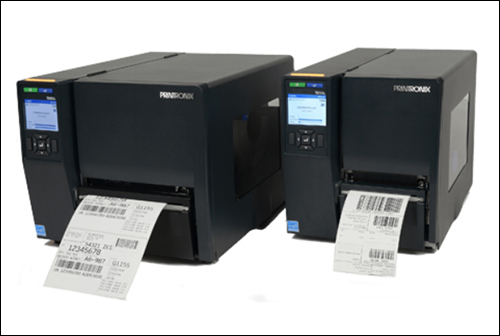
An interchangeable printhead on the 4-inch model allows 600 dpi print resolution, as well as 203 and 300 dpi. This expands applications for users, the company explains, from straightforward shipping tags to intricate labels with detailed Asian characters required on items like PCB assemblies. The T6000e is built to be compatible with standard RFID printer-encoders, the firm notes. Able to encode and print on-metal and standard RFID labels and tags, the device can be used for tracking tools and equipment in the manufacturing, supply chain, IT, health-care and service-yard industries.
The printer has the built-in capability to back up and completely overstrike any RFID labels that fail to encode properly. The T6000e was built on the Printronix System Architecture platform. It comes with nine printer emulations for plug-and-playability in competitor environments, along with a large LCD color screen. The T6000e is backward-compatible with existing T6000 applications and can be specified with PrintNet Enterprise, a remote printer-management tool.
Wiliot Raises Funding for Postage-Stamp-Sized IoT Computer
Wiliot, a cloud technology and semiconductor company, recently unveiled a battery-free Bluetooth sensor tag for Internet of Things (IoT) applications (see Companies Testing Passive BLE Sensor Tag). The firm has now raised funding for its postage-stamp-sized computer. Vintage Investment Partners, Verizon Ventures, Maersk Growth, PepsiCo and NTT DOCOMO Ventures join previous Wiliot investors, including 83North, Amazon Web Services Investment Arm, Avery Dennison, Grove Ventures, M Ventures, Norwest Venture Partners, Qualcomm Ventures LLC and Samsung Venture Investment Corp.
“Twelve months ago, conditions had to be perfect for the very first tags to work,” said Tal Tamir, Wiliot’s CEO, in a prepared statement. “Now we demonstrate Wiliot tags on bottles of wine, boxes of pizza and on envelopes. We are understanding how these tiny sensors embedded into products and packaging can change the way things are made, distributed, sold, used and recycled. By having a multiprocessor compute engine that powers itself, we have the security and flexibility to bring sensing and connectivity to things that previously couldn’t be connected to the Internet of Things. Privacy is key if you are to connect products to the internet and nothing short of a system of this kind can make sure only the right people can see this information.”
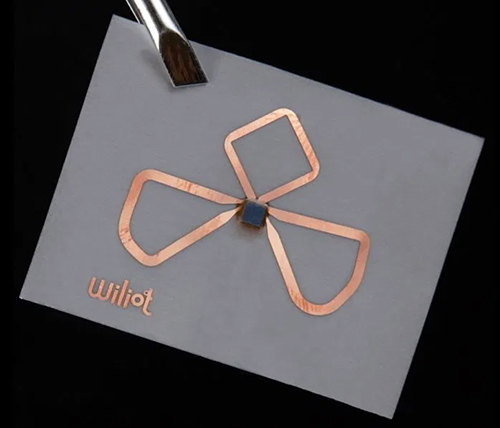
The latest investment round will provide the resources required for Wiliot to support its customers’ pilot projects and the growing development of its cloud components. Wiliot Cloud enables IoT applications integrated with billions of products to scale. A machine-learning component provides what the firm calls “sensorless sensing,” eliminating the need for bulky on-tag sensors by shifting the analytics to a cloud system that can learn and improve. Wiliot is running an early-access program as part of a controlled release of pre-production versions of the product with more than 20 global brands.
“Entrepreneurial partners like Wiliot are part of PepsiCo’s ongoing global effort to work collaboratively with startups as we advance our ambitions to become faster, stronger and better,” said Jim Andrew, PepsiCo’s executive VP for SodaStream, Beyond the Bottle and New Ventures, in the prepared statement. “Wiliot’s deep technology solution offers numerous use case possibilities, including the potential to better serve our partners by getting the right product, to the right place, at the right time.”
“Wiliot’s technology will create an expansive opportunity for how products are tracked and industries are managed,” added Merav Rotem Naaman, Verizon Ventures’ managing director, in the prepared statement. “The company’s cloud-connected, battery-free Bluetooth tag enables a process that is more cost-efficient and consumer-centric, connecting new classes of ‘things’ to the internet, at scale.”
“We see technologies like Wiliot’s as being part of a shift in the way supply chains are organized,” said Deloitte’s Rasmus Winther Moelbjerg in the statement. “Historically, production and distribution were driven by forecasting models that could often be wrong. We see a future where ‘demand signals’ that communicate using existing infrastructure in real time from the store and even from consumers’ homes as they use products. By having an active compute element built into products and packaging that can sense temperature and usage while securely managing a unique digital ID for each product, there is the potential to run much leaner supply chains, consumption based business model, that reduce capital employed and carbon footprint while delivering a better experience to customers.”
IoT Company Swift Sensors Intros Water-Resistant PoE Bridge
Swift Sensors, a supplier of cloud-based wireless sensor systems for the Industrial Internet of Things (IIoT), has released a water-resistant Power-over-Ethernet (PoE) bridge for use in manufacturing plants, restaurants and other spaces in which water, cleaning solutions and other chemicals come into contact with monitoring equipment.
“Many of our industrial customers have requested a water-resistant PoE bridge, specifically for use in wet and harsh environments,” said Ray Almgren, Swift Sensors’ COO, in a prepared statement. “Our new bridge delivers a ruggedized and cost-effective IoT networking solution for applications such as industrial manufacturing, pharmaceutical manufacturing, food and beverage manufacturing, wastewater treatment facilities, refineries and restaurants.”
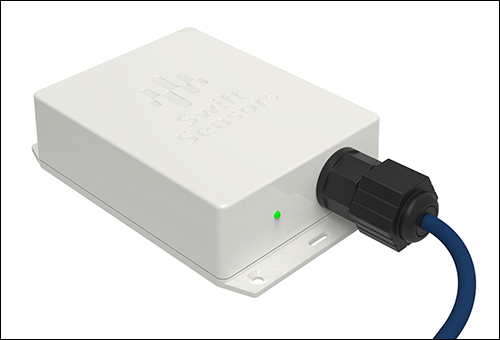
The PoE Standard Bridge 1011 is built to withstand washdown procedures and exposure to chemicals, the company reports. It comes with an IP54-rated dust- and water-resistant enclosure to protect against ingress from all directions; a mountable design and form factor also used in Swift Sensors’ 1020 and 1030 bridges; a single cable for power and Ethernet to eliminate the need for additional hardwiring, and to ensure a consistent power supply; compliance with the active 802.3af and 802.3at PoE standards for use in PoE systems; and 256-bit AES enterprise encryption.
Swift Sensors’ wireless system is designed to offer plant and restaurant managers a digital view of their facility, including measurements, notifications, shift performance and more. This data, analysis and reporting can improve the operational output and productivity of manufacturers and food service providers, the company explains, even under harsh conditions.
TAG Sensors Opens Factory in Norway
TAG Sensors, a cold chain monitoring solution provider, has opened a production facility in Mo i Rana, Norway. TAG Sensors produces a printable temperature sensor label that can be attached to a product or package, which continuously records the product’s temperature throughout its life cycle, from manufacturer to consumer.
The company says it hopes to gain complete control over its production and quality, improve its response times and increase the opportunity for customization based on customers’ needs. TAG Sensors’ offerings are designed for use in the identification and reduction of product waste in the food and pharmaceutical industries. “This is a unique production line that there is no equivalent to in the world, as it is specially developed for TAG Sensors,” said Knut Nygård, TAG Sensors’s CEO, in a prepared statement. “It is fully automated and has a capacity of over 30 million units annually.”
TAG Sensors has customers in more than 20 countries. Havi is a strategic logistics provider for McDonald’s globally and was one of TAG Sensors’ first customers. “TAG Sensors’ innovative cold chain solution is being implemented and used by McDonalds supply chain partners through approval of McDonald’s innovation council,” said Ainārs Dobulis, the manager of Havi Freight, in the prepared statement. “The solution fulfils McDonalds high requirements focusing on food quality, and customers safety.”
Another customer is Bakkafrost, a worldwide salmon producer. “Bakkafrost is using TAG Sensors’ solution so our customers know that our product has been within the temperature limits during transport,” said Andrias Petersen, the company’s production manager, in the prepared statement. “We are using the solution from our production site in the Faroe Islands to our customers around the world.”
CalAmp Launches Smart Sensors for Tracking Assets
CalAmp, a technology solutions company, has announced the commercial availability of its iOn Tag visibility services, which are designed to help fleet operators monitor and protect assets critical to service delivery. The iOn Tag smart sensors can be affixed to diagnostic test equipment and other service tools to ensure that the correct equipment is used on vehicles or in yards or storage areas, thereby improving service and operational efficiency, while reducing the cost of replacing equipment that might otherwise be lost or misplaced.
Fleet operators are often responsible for thousands of dollars’ worth of critical equipment and assets required to deliver their services to end customers. Most existing fleet-management solutions, CalAmp indicates, cannot effectively track ancillary assets in relation to service vehicles, causing costly service or project delays.
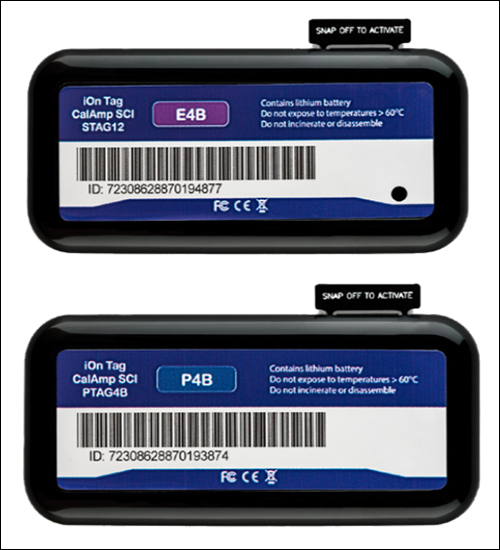
iOn Tag smart sensors can be affixed to any asset and be activated through the iOn Tag visibility service, powered by the CalAmp Telematics Cloud. If tools or other valuable assets are left behind, the system will identify the last known location and alert fleet managers and drivers to assist in a quick recovery. A flexible API allows fleet operators and telematics service providers to incorporate the visibility service, or other CalAmp micro-services such as CrashBoxx, directly into their custom applications.
“We discovered through our engagement with fleet managers and TSPs that their asset-management pain points were not addressed cost-effectively with existing asset-visibility solutions,” said Michael Burdiek, CalAmp’s CEO, in a prepared statement. “Now, with CalAmp iOn Tag service, fleet operators and TSPs can deploy custom solutions to more effectively manage a wider range of vehicles and assets with full visibility and edge intelligence, all at a lower cost than alternative, standalone cellular-based solutions.”
Armstrong International, Everactive Collaborate on IoT Steam Trap Monitoring System
Armstrong International, a provider of energy-management solutions, has announced that it will work with Everactive to create a more efficient approach to steam trap management, combining Everactive’s low-power wireless technology with Armstrong’s trap-management Web platform.
Everactive builds wireless, batteryless Internet of Things (IoT) solutions for steam systems and other industrial equipment and infrastructure. Armstrong, meanwhile, is one of the world’s largest manufacturers of steam traps, and it invented and patented the inverted bucket stream trap in 1911.
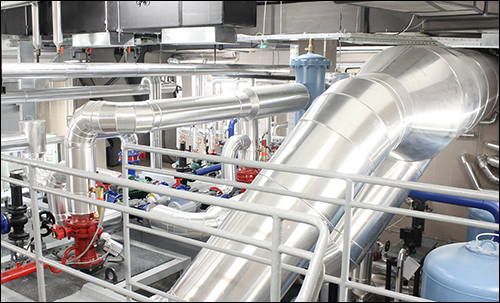
In 2016, Armstrong introduced its SAGE system for steam and hot water system management. The software platform automates steam trap failure alerts to reduce the financial and environmental costs associated with undetected failures, as well as the costs associated with manual inspection rounds. SAGE accepts a range of inputs, including data collected manually and with automated monitoring devices. Existing monitoring devices are powered by batteries, so Everactive provided low-power circuit technology allowing its sensors to operate from low levels of harvested energy.
As Everactive developed its Steam Trap Monitoring (STM) solution using this batteryless platform, it turned to Armstrong to validate its approach. Although temperature spot-checks alone cannot reliably identify trap failures, the companies note, Everactive’s technology raised the possibility that it could be done with continuous temperature monitoring. Armstrong thus tested multiple steam traps and modes of operation, including cold and blow-through traps, and concluded that a combination of continuous temperature monitoring and analytics allows the STM solution to correctly detect a steam trap’s status.
The validity of the approach offers Armstrong an opportunity to feed its SAGE platform with more robust and granular data, the firm reports, while providing insights to the companies’ customers. As Armstrong and Everactive continue their collaboration—which will further combine Everactive’s data-collection techniques with Armstrong’s thermal analytics expertise—the two companies plan to integrate their existing offerings and jointly develop new ones for the steam and condensate market.

